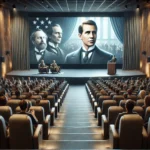The landscape of filmmaking has undergone a seismic shift due to rapid advancements in technology. These innovations have not only transformed the way movies are made but also how audiences consume and interact with them. From the integration of artificial intelligence (AI) in production to the use of virtual reality (VR) and computer-generated imagery (CGI), modern filmmaking is in a golden age of creative and technological synergy.
The Rise of Computer-Generated Imagery (CGI)
One of the most groundbreaking changes in modern filmmaking is the use of CGI, which has expanded the boundaries of visual storytelling. Filmmakers are no longer limited by physical sets or practical effects. CGI allows for the creation of expansive universes, impossible creatures, and breathtaking action sequences that would be infeasible with traditional methods.
- Example: The Marvel Cinematic Universe (MCU) and films like Avatar and The Lion King (2019) have set new standards in CGI, blurring the line between reality and digital imagination.
Virtual Production and Green Screen Technologies
Virtual production, using large LED screens and advanced rendering systems, has revolutionized how scenes are shot. Technologies like Unreal Engine allow filmmakers to create realistic environments on set, which can be adjusted in real-time. This reduces the need for expensive location shoots and enhances the director’s creative control.
- Example: Disney’s The Mandalorian extensively used virtual production, allowing actors to perform in immersive environments that looked and felt real.
Artificial Intelligence and Machine Learning
AI has begun to make its presence felt in various aspects of filmmaking. From predictive algorithms that help studios understand audience preferences to AI-driven editing tools, the technology is enabling faster production cycles and more data-driven decision-making.
- AI in Pre-Production: AI tools can now assist in scriptwriting, offering suggestions based on genre, style, and tone. Additionally, AI is helping with casting choices by analyzing audience data to predict which actor pairings will generate the most interest.
- AI in Post-Production: Editing software is increasingly relying on machine learning to streamline the post-production process, automatically selecting the best takes and optimizing scenes based on lighting, color grading, and sound quality.
Virtual Reality (VR) and Augmented Reality (AR) in Storytelling
VR and AR are pushing the boundaries of how stories are told by immersing audiences in interactive experiences. While still in its early stages for mainstream cinema, VR and AR are beginning to find niche applications in short films and experimental projects.
- Interactive Experiences: VR offers the audience a chance to experience a movie from a first-person perspective, providing an unparalleled sense of immersion. Directors are beginning to experiment with this format, especially in genres like horror and adventure.
The Influence of Streaming Platforms
Streaming platforms like Netflix, Amazon Prime, and Disney+ have redefined how films are distributed and consumed. The rise of these platforms has forced traditional studios to rethink their release strategies and has given filmmakers more creative freedom without the constraints of box office demands.
- Changing Viewing Habits: Streaming has also changed the nature of storytelling, with filmmakers creating more episodic content to cater to binge-watching audiences. This shift has blurred the lines between film and television, leading to an influx of “mini-series” or long-format films.
Drones in Cinematography
Drones have become a game-changer in cinematography, allowing filmmakers to capture stunning aerial shots that were previously accessible only through helicopters and cranes. Drones offer a cost-effective way to shoot complex scenes from new perspectives, making high-quality visuals more accessible to indie filmmakers.
- Example: Films like Skyfall and The Wolf of Wall Street have incorporated drone footage to enhance their cinematography, offering sweeping shots of landscapes and action sequences.
The Future: AI-Generated Movies and Real-Time Rendering
Looking forward, technologies like real-time rendering and AI-generated content are likely to continue shaping the future of filmmaking. Directors may one day collaborate with AI not only for post-production but for real-time story generation, allowing filmmakers to create content faster and more efficiently.
- Example: Some short films have already been entirely generated by AI, demonstrating the potential of machine learning to create not just effects or scripts but entire narratives.
Technological advances have reshaped modern filmmaking, empowering directors to push the boundaries of creativity and innovation. As tools like CGI, AI, and VR continue to evolve, the future of cinema looks more exciting than ever. These technologies are not only enhancing the way films are made but also transforming the relationship between filmmakers and audiences, opening the door to new, immersive storytelling possibilities.
The evolution of filmmaking is far from over, and we are likely to see even more breakthroughs in the coming decades. Whether it’s through AI-driven storytelling or immersive VR experiences, the intersection of technology and film promises to deliver a future where the impossible becomes possible on the big screen.


